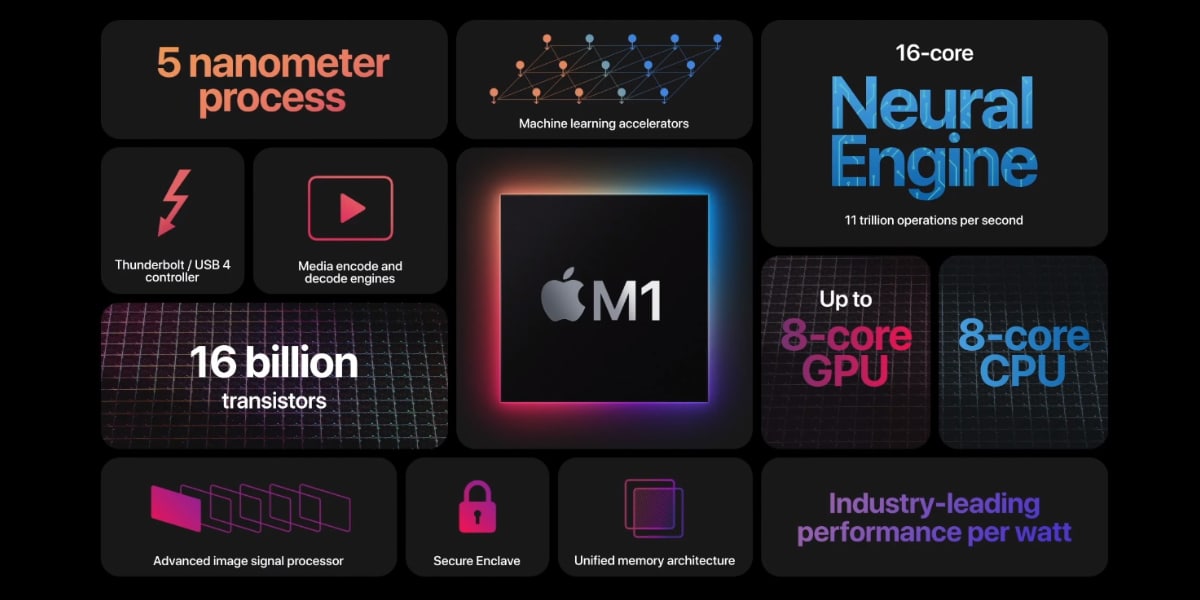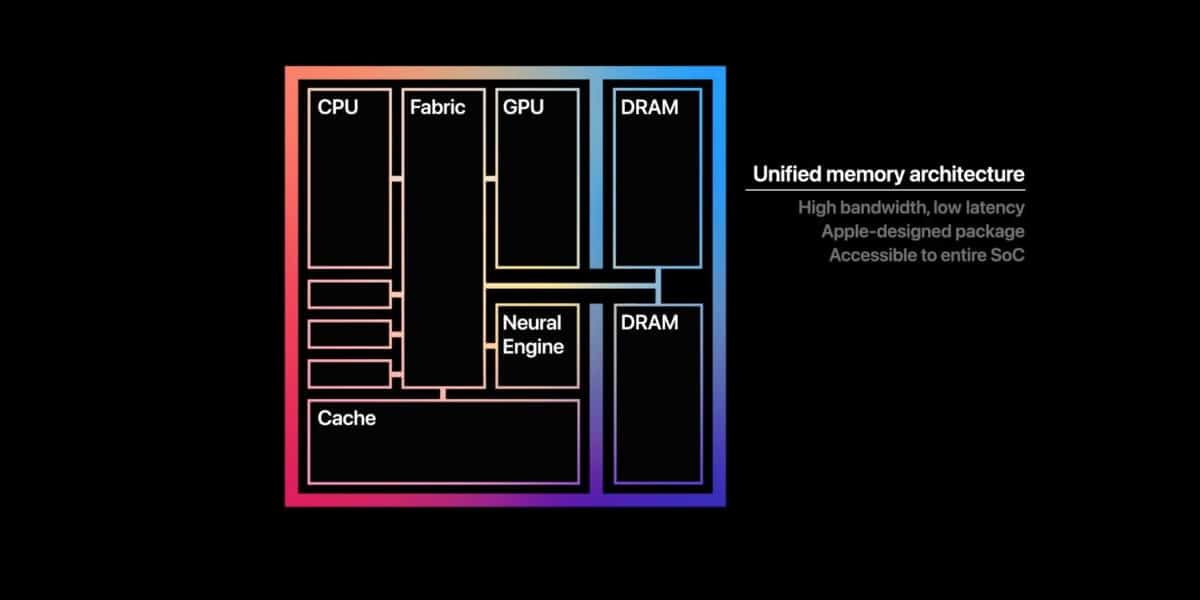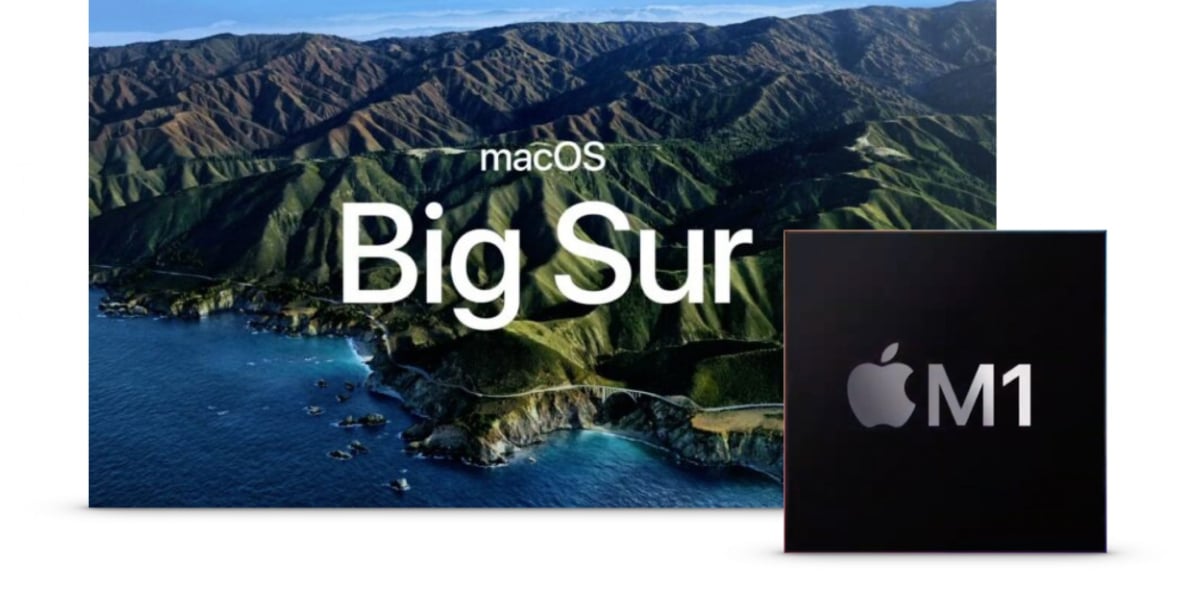
I honestly do not believe that in the basements of Apple Park There is the laboratory that Craig Federighi showed us in the presentation of the Apple Silicon project and the Macs with the new M1 processor. It looks like a "props" lab set up to film presentations.
I guess the design of the M1 It will have been carried out between the laboratories of the creator of the plans, ARM, and the manufacturer, TSMC. Wherever it is, the point is, they've nailed it. It's been a couple of weeks since the Apple Silicons are on the streets, and the first tests are spectacular in terms of speed and performance. An independent developer has explained the causes of this fantastic performance.
When in the event «One more thing» Craig Federighi He introduced us to the first processor of the new era of Apple Silicon Macs, the M1, his mouth was filled with praise and good characteristics of said processor. Some skeptics thought "well, let's wait until I have it on my table and see all those qualities for myself, to see if it's true."
Well, we already have the first Macs delivered and the first impressions have not been long in coming. Simply put: brutal. The M1 processor manufactured by TSMC With 5 nm technology it is giving spectacular performance, both in terms of processing speed, as well as its low levels of energy consumption and low working temperature.
erik engheim, is an independent developer who has nothing to do with Apple, and has written an interesting thesis on the reasons for the good performance of the Apple M1 processor. Here you have all his theory, and we have made you a summary.
The M1 is a very specialized chipset

The M1 is a chipset encapsulated on the same silicon board.
First of all, the M1 processor is not a simple CPU. As Apple has explained, it is a System-on-a-Chip. It is a set of chips that are all housed together on a silicon board. The M1 houses an 8-core CPU, 8-core GPU (7-core on some MacBook Air models), unified memory, SSD controller, image signal processor, Secure Enclave, and several other chips.
In addition to the CPU (with high-performance, high-efficiency cores) and GPU, the M1 has a neural motor for machine learning tasks such as speech recognition and camera processing and a built-in video decoder / encoder for energy efficient video file conversion.
It also includes the Secure Enclave to handle encryption, and the digital signal processor to handle mathematically intensive functions (such as decompression of music files and the image processing unit that speeds up the tasks performed by image processing applications).
And the thing does not end here. On the silicon board there is also room for a new architecture of unified memory It allows the CPU, GPU, and other cores to exchange information with each other, and with unified memory, the CPU and GPU can access memory simultaneously instead of copying data from one area to another. Accessing the same pool of memory without the need for copying speeds up information exchange for faster overall performance.
A spectacular performance
This is part of the reason that many people who work in image and video editing with M1 Macs are seeing such speed improvements. Many of the tasks they do can be performed directly on specialized hardware. That is what allows a Mac Mini M1 economical to encode a large video file, without stressing it out, whereas a much more expensive iMac (Intel) has to work to the limit, without reaching the speed of the Mac mini M1.
Other Arm chipmakers like AMD are taking a similar approach, but Intel and AMD They rely on the sale of general-purpose CPUs and for licensing reasons, PC manufacturers like Dell and HP probably can't design a full SoC like Apple is capable of.
M1 and macOS Big Sur are the perfect symbiosis

The key to success is the perfect symbiosis between hardware and software.
Apple is able to integrate hardware and software in a way that most other companies can't possibly get, which is always something that has given the iPhone and iPad an edge over other smartphones and tablets.
Intel and AMD can surely start making complete processors like the M1. But what are these going to contain? PC manufacturers may have different ideas of what they should contain. Potentially you get a conflict between the manufacturers of Intel, AMD, Microsoft and PC about what type of specialized chips to include because they will need software support. A software that can only give it Microsoft.
Along with the benefits of an internally designed system on a chip, Apple is also using CPU cores Firestorm on the M1 they are "genuinely fast" and capable of executing more instructions in parallel through out-of-order execution, the RISC architecture, and some specific optimizations that Apple has implemented, of which Engheim has an in-depth explanation.
Engheim believes that Intel and AMD are in a difficult situation due to the limitations of the CISC instruction set and their business models that do not facilitate the creation of end-to-end chip solutions for PC manufacturers. Apple has certainly nailed it with the new era Apple silicon.